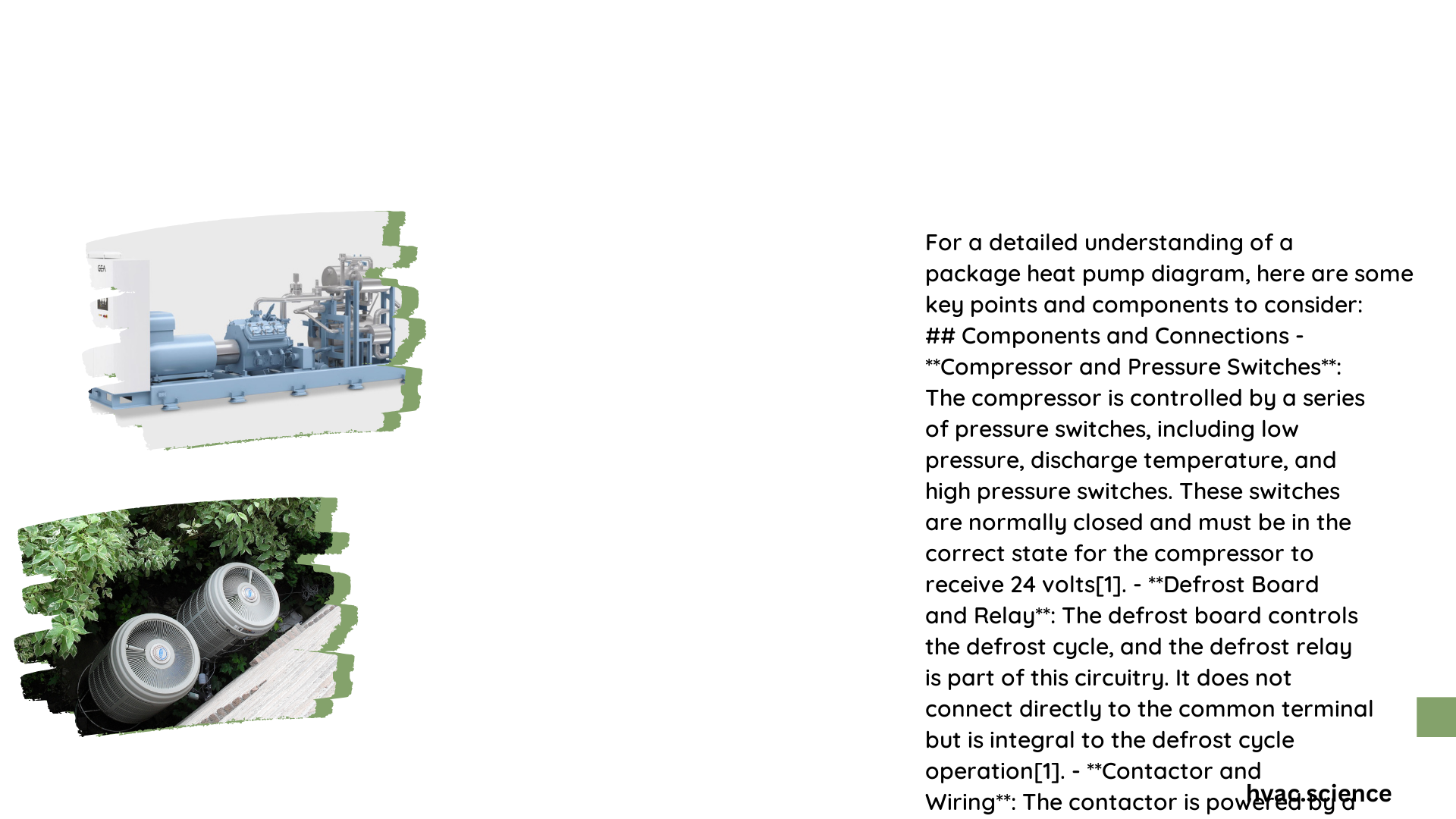A package heat pump diagram represents a comprehensive visual representation of an integrated heating and cooling system, illustrating the intricate relationships between critical components like compressor, condenser, evaporator, and expansion valve. This technical schematic provides engineers and technicians with a precise blueprint of refrigerant flow, electrical connections, and thermal transfer mechanisms essential for understanding system performance and operational dynamics.
What Are the Primary Components in a Package Heat Pump Diagram?
Compressor Specifications
| Component | Technical Details |
|---|---|
| Type | Scroll or Rotary |
| Voltage | 208-230V |
| Phase | Single-phase |
| Frequency | 60 Hz |
The compressor serves as the heart of the heat pump system, responsible for pressurizing and circulating refrigerant through the system. Key characteristics include:
- Compression mechanism transforms low-pressure gas into high-temperature, high-pressure refrigerant
- Enables heat transfer between indoor and outdoor environments
- Determines overall system efficiency and performance
Refrigerant Flow Mechanism
Refrigerant circulation follows a precise thermodynamic cycle:
- Compression Stage
- Low-pressure refrigerant enters compressor
- Compressed into high-temperature, high-pressure gas
-
Energy is added to the system
-
Condensation Stage
- Hot refrigerant releases heat to external environment
- Transforms from gas to liquid state
-
Pressure remains constant
-
Expansion Stage
- Refrigerant passes through expansion valve
- Pressure and temperature dramatically decrease
-
Prepares for heat absorption
-
Evaporation Stage
- Low-pressure refrigerant absorbs heat from indoor space
- Transforms back into gaseous state
- Cycle repeats continuously
How Does Electrical Connectivity Work?

Wiring Configuration
Electrical connections in a package heat pump diagram typically involve:
- Power Supply Terminals
- L1 (Black): Primary hot wire
- L2 (Red): Secondary hot wire
-
Ground: Safety connection
-
Control Circuit Connections
- Thermostat interface
- Defrost control
- Fan speed regulation
- Compressor protection circuits
What Installation Considerations Exist?
Pre-Installation Checklist
- Verify site levelness
- Confirm electrical compatibility
- Ensure proper ventilation
- Check structural support requirements
- Validate ductwork connections
Installation Steps
- Mount unit on designated platform
- Connect electrical supply
- Install refrigerant lines
- Attach ductwork
- Configure control systems
- Perform comprehensive system testing
What Performance Metrics Matter?
Efficiency Indicators
- SEER Rating: Seasonal Energy Efficiency Ratio
- HSPF: Heating Seasonal Performance Factor
- EER: Energy Efficiency Ratio
Cost Considerations
| Component | Estimated Cost Range |
|---|---|
| Compressor | $500 – $1,500 |
| Coils | $200 – $500 |
| Control Systems | $100 – $500 |
| Installation | $1,000 – $5,000 |
Technical Recommendations
- Regular maintenance prevents efficiency degradation
- Professional installation ensures optimal performance
- Choose components matching specific environmental requirements
- Consider local climate when selecting heat pump specifications
Conclusion
A comprehensive package heat pump diagram provides critical insights into system design, operational mechanics, and performance optimization strategies for HVAC professionals.
